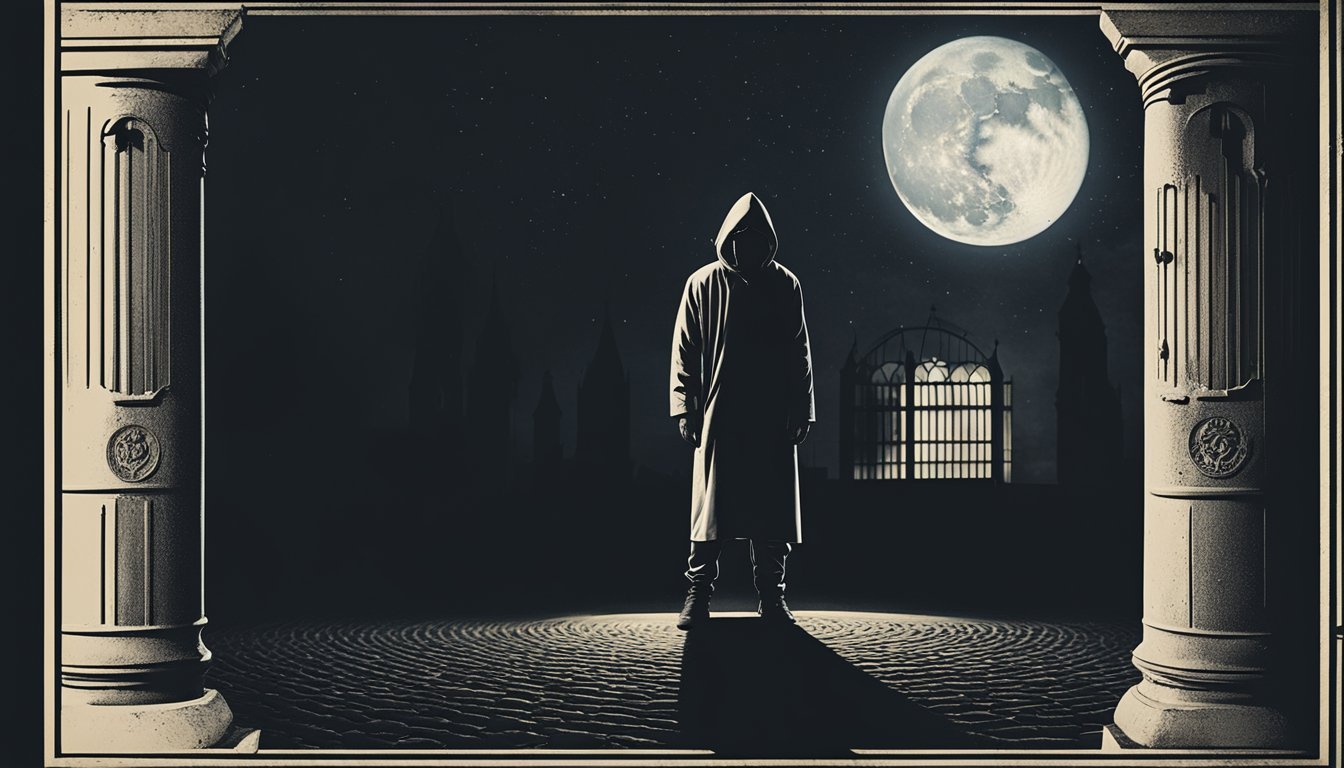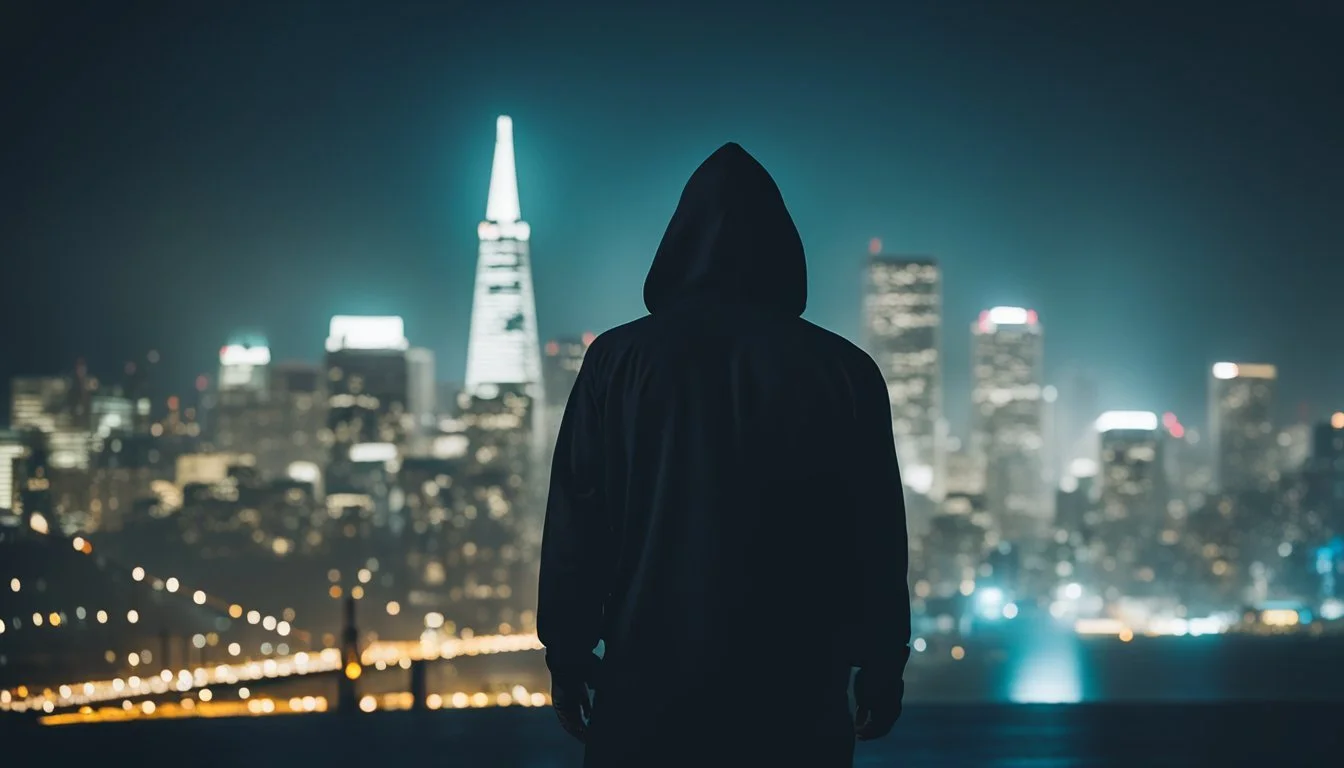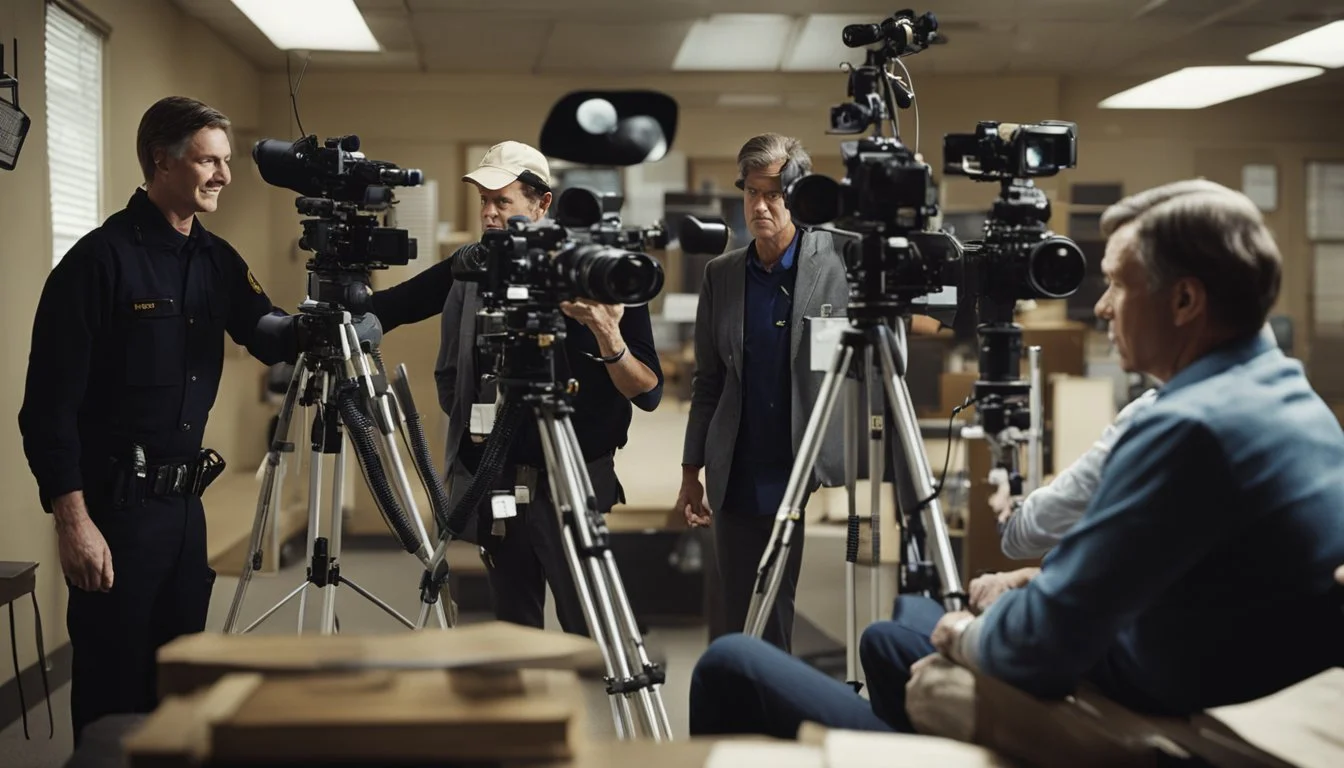Decoding Terror: Documentaries Unravel the Zodiac Killer Mystery
The Zodiac Killer case captivated public attention during the late 1960s and early 1970s. This unsolved mystery involving a serial murderer who terrorized Northern California has spawned numerous documentaries over the years. These films aim to shed light on the enigmatic killer and the investigation surrounding the crimes.
Documentaries about the Zodiac Killer offer viewers an in-depth look at one of America's most infamous cold cases. They explore various aspects of the investigation, including cryptic letters sent to newspapers, potential suspects, and the lasting impact on the victims' families and communities. Through interviews, archival footage, and expert analysis, these documentaries attempt to piece together the puzzle of the Zodiac Killer's identity and motives.
1) The Zodiac Killer: Case Closed?
"The Zodiac Killer: Case Closed?" (2017) examines the controversial claims of Gary L. Stewart, who believes his father was the infamous Zodiac Killer. The documentary explores Stewart's investigation and evidence.
"The Hunt for the Zodiac Killer" (2017) follows a team of code-breakers and investigators using modern technology to crack the Zodiac's ciphers. The series presents new theories and potential suspects in the case.
"The Most Dangerous Animal of All" (2020) adapts Stewart's book into a four-part series. It delves deeper into his search for his biological father and the connections he draws to the Zodiac murders.
These documentaries present different perspectives on potential Zodiac Killer suspects. They showcase new investigative techniques and reevaluate old evidence in attempts to solve the case.
While these films offer intriguing theories, the Zodiac Killer case remains officially unsolved. Law enforcement continues to investigate leads and examine evidence using advanced forensic methods.
External link: The Most Dangerous Animal of All - IMDb
2) This is the Zodiac Speaking
"This is the Zodiac Speaking" (2008) is a comprehensive documentary that delves into the infamous Zodiac Killer case. The film provides an in-depth look at the investigation through interviews with original investigators and surviving victims.
The documentary covers various aspects of the case, including the killer's cryptic letters and ciphers sent to the press. It explores the terror that gripped California in 1969 as the Zodiac carried out his series of murders.
Directed by David Prior, the film offers a fresh perspective on one of America's most notorious unsolved crime sprees. It features insights from key figures involved in the investigation, shedding new light on the case.
"This is the Zodiac Speaking" stands out for its thorough examination of the evidence and the impact the killings had on the community. The documentary presents a balanced view of the case, allowing viewers to draw their own conclusions.
3) The Hunt for the Zodiac Killer (2017)
"The Hunt for the Zodiac Killer" is a documentary series that aired on the History Channel in 2017. It features LAPD homicide detective Sal LaBarbera and a team of expert codebreakers.
The series focuses on their efforts to unravel the mystery of the Zodiac Killer, who terrorized Northern California in the late 1960s and early 1970s. It combines modern investigative techniques with historical evidence to explore the case.
Viewers follow the team as they examine cryptic letters sent by the killer to local newspapers. The series also delves into the unsolved murders attributed to the Zodiac Killer.
"The Hunt for the Zodiac Killer" uses advanced technology and forensic analysis in an attempt to identify the elusive serial killer. It presents new theories and potential leads in the decades-old case.
The documentary series consists of five episodes, each exploring different aspects of the investigation. It offers viewers a comprehensive look at one of America's most infamous unsolved criminal cases.
4) The Most Dangerous Animal of All
The Most Dangerous Animal of All (2020) is a four-part documentary series that aired on FX. It explores Gary L. Stewart's search for his biological father and the shocking revelation that followed.
Stewart's investigation led him to believe his father was the infamous Zodiac Killer. The series is based on Stewart's New York Times best-selling book of the same name.
The documentary follows Stewart's journey as he uncovers clues about his father's identity. It examines the evidence that led Stewart to his controversial conclusion.
The series features interviews with Stewart, his birth mother, and experts involved in the Zodiac Killer case. It presents archival footage and reenactments to illustrate key events.
The Most Dangerous Animal of All offers a unique perspective on the Zodiac Killer mystery. It combines true crime investigation with a personal story of family discovery.
5) The Zodiac Killer Files
The Zodiac Killer Files (2009) is a documentary that delves into the infamous case of the unidentified serial killer who terrorized Northern California in the late 1960s and early 1970s. This film presents a comprehensive examination of the evidence and details surrounding the unsolved murders.
The documentary features interviews with law enforcement officials, witnesses, and experts involved in the investigation. It analyzes the cryptic letters and ciphers sent by the killer to newspapers, providing insight into the killer's psychology and motives.
The Zodiac Killer Files explores various theories about the killer's identity and examines potential suspects. It also highlights the impact of the case on the victims' families and the community at large. The film serves as a valuable resource for those interested in this enduring mystery.
More information on The Zodiac Killer Files
6) American Experience: The Zodiac Killer (2009)
"American Experience: The Zodiac Killer" is a documentary that aired as part of PBS's renowned American Experience series. This film offers a comprehensive look at the infamous case that gripped Northern California in the late 1960s and early 1970s.
The documentary explores the Zodiac Killer's reign of terror, detailing the known attacks and the cryptic letters sent to local newspapers. It features interviews with law enforcement officials, survivors, and journalists who were involved in the case.
Directed by David Prior, the film provides a balanced perspective on the investigation and its impact on the communities affected. It examines the public fear and fascination that surrounded the case, as well as the long-lasting effects on those involved.
The documentary also delves into the various theories and suspects that have emerged over the years, highlighting the enduring mystery of the Zodiac Killer's identity. It presents archival footage and recreations to bring the historical context to life.
More information on American Experience: The Zodiac Killer
7) True Crime: The Zodiac Murders
True Crime: The Zodiac Murders (2017) is a documentary that examines the infamous unsolved case of the Zodiac Killer. It presents a comprehensive overview of the serial murders that occurred in Northern California during the late 1960s and early 1970s.
The film explores the killer's methods, victims, and the cryptic letters sent to local newspapers. It features interviews with investigators, witnesses, and experts who provide insights into the case.
True Crime: The Zodiac Murders delves into the various suspects and theories that have emerged over the years. It examines the evidence and discusses the ongoing efforts to identify the elusive killer.
The documentary also highlights the impact of the Zodiac case on popular culture and its enduring fascination in true crime circles. It presents archival footage and reenactments to bring the chilling events to life.
8) The Zodiac Killer's Reign of Terror
The Zodiac Killer terrorized Northern California from 1968 to the early 1970s. His brutal attacks left communities in fear and law enforcement struggling to identify the elusive murderer.
The killer targeted young couples in secluded areas, striking with ruthless efficiency. His victims were found in Benicia, Vallejo, Lake Berryessa, and San Francisco.
What set the Zodiac apart was his taunting communication with the press and police. He sent cryptograms and letters, claiming responsibility for his crimes and threatening more violence.
The Zodiac's coded messages captivated the public and confounded investigators. One of his ciphers remained unsolved for over 51 years until it was cracked in 2020.
Despite an extensive investigation, the Zodiac Killer's true identity remains unknown. The case has inspired numerous theories, books, and films over the decades.
The Zodiac's reign of terror highlighted the limitations of forensic technology at the time and the challenges of catching a methodical, unpredictable killer.
9) The Zodiac Enigma
"The Zodiac Enigma" (2007) explores the mysterious case of the Zodiac Killer through interviews and archival footage. This documentary delves into the cryptic letters and ciphers sent by the killer to newspapers.
The film examines the various theories surrounding the killer's identity and motives. It presents evidence from law enforcement officials and amateur sleuths who have dedicated years to solving the case.
"The Zodiac Enigma" also focuses on the impact of the murders on the victims' families and the Northern California community. It highlights the enduring fascination with the case and its influence on popular culture.
The documentary analyzes the killer's modus operandi and the challenges faced by investigators in tracking him down. It discusses the potential suspects and the reasons why the case remains unsolved to this day.
10) Deciphering the Zodiac
"Deciphering the Zodiac Killer" is a captivating documentary that explores one of America's most notorious unsolved cases. The film examines the Zodiac Killer's reign of terror in Northern California during the late 1960s and early 1970s.
It delves into the cryptic letters and coded messages sent by the killer to local newspapers. These communications became a hallmark of the case, adding to its intrigue and complexity.
The documentary traces the investigation's progression and the widespread panic that gripped the region. It showcases how the Zodiac Killer case has had a lasting impact on criminal investigations.
Viewers gain insight into the various theories and suspects that have emerged over the years. The film presents evidence and expert opinions, allowing audiences to form their own conclusions about this enduring mystery.
"Deciphering the Zodiac Killer" offers a comprehensive look at one of criminology's most fascinating puzzles. It serves as both a historical record and a thought-provoking examination of an unresolved case that continues to captivate the public imagination.
More information on IMDb (2022)
Historical Context
The Zodiac Killer case unfolded against the backdrop of social upheaval in late 1960s California. This period saw heightened public fear, intense media coverage, and challenges for law enforcement in tracking an elusive killer.
The Zodiac Killer's First Known Attacks
The Zodiac Killer's reign of terror began on December 20, 1968, in Benicia, California. Two teenagers, Betty Lou Jensen and David Faraday, were shot while parked in a secluded area. This attack marked the start of a series of brutal crimes that would grip the Bay Area.
On July 4, 1969, the killer struck again in Vallejo, shooting Darlene Ferrin and Michael Mageau. Ferrin died, but Mageau survived, providing the first eyewitness description of the attacker.
The killer's pattern of targeting young couples in isolated areas became apparent. These initial attacks set the stage for the fear and fascination that would surround the Zodiac Killer case.
Public and Media Reaction
The Zodiac Killer's crimes sparked widespread panic in Northern California. Residents were on edge, fearful of becoming the next victims. Many changed their routines and avoided secluded areas.
Media coverage of the case was intense and continuous. Newspapers eagerly published the killer's letters, which contained cryptograms and taunts to law enforcement. This coverage inadvertently gave the Zodiac Killer a platform and notoriety.
The public's fascination with the case grew as the killer's identity remained a mystery. Amateur sleuths and armchair detectives began their own investigations, adding to the complexity of the case.
Role of Law Enforcement
Law enforcement faced significant challenges in the Zodiac Killer investigation. Multiple jurisdictions were involved, complicating coordination efforts. The killer's taunting letters and cryptograms added pressure on police to solve the case quickly.
Detectives pursued numerous leads and suspects, but struggled to find concrete evidence. The lack of modern forensic techniques, such as DNA analysis, hampered their efforts.
The case remained open for decades, becoming one of the most famous unsolved crimes in American history. It continues to be a subject of investigation and speculation, with law enforcement agencies still hoping to identify the Zodiac Killer.
Investigation Process
The Zodiac Killer case involved extensive evidence collection, psychological profiling, and dedicated investigators. These elements formed the backbone of the complex investigation that captivated the public for decades.
Evidence Collection
Physical evidence played a crucial role in the Zodiac Killer investigation. Crime scene investigators meticulously gathered items like fingerprints, handwriting samples, and bullet casings from multiple attack sites.
The killer's letters and cryptograms became key pieces of evidence. Forensic experts analyzed the writing style, paper, and postmarks for clues about the sender's identity and location.
Witness statements provided valuable information. Survivors and bystanders helped create composite sketches and described the killer's appearance and behavior.
Profile of the Zodiac Killer
Behavioral analysts developed a psychological profile of the Zodiac Killer based on crime scene evidence and communications. They believed the killer was likely a white male in his late 20s to early 40s.
The profile suggested he was intelligent but socially isolated. Analysts noted his possible military background due to his knowledge of weapons and codes.
His taunting letters indicated a desire for attention and a need to prove his superiority over law enforcement. This narcissistic trait became a key aspect of the killer's profile.
Key Investigators
Dave Toschi of the San Francisco Police Department led the investigation for years. His dedication to the case inspired the character of Inspector Callahan in the movie "Dirty Harry."
Robert Graysmith, a political cartoonist, became obsessed with solving the case. His research and books brought renewed attention to the investigation decades later.
FBI agent John Douglas contributed to the psychological profile. His work on the Zodiac case helped establish modern criminal profiling techniques.
These investigators faced numerous challenges, including jurisdictional issues and the killer's ability to evade capture. Their efforts laid the groundwork for continued interest in the unsolved mystery.
Ciphers and Communication
The Zodiac Killer's cryptic messages and ciphers became a defining aspect of the case. These coded communications captivated the public and challenged law enforcement, leaving a lasting impact on the investigation.
Deciphering the Codes
The Zodiac Killer sent four coded messages to newspapers in 1969 and 1970. The first cipher, containing 408 characters, was cracked within a week by a schoolteacher and his wife. This initial success encouraged cryptologists to tackle the remaining ciphers.
The second cipher, known as Z340, proved much more challenging. It remained unsolved for over 51 years until December 2020, when a team of cryptography enthusiasts finally deciphered its contents using advanced computer algorithms.
The third and fourth ciphers, Z13 and Z32, remain unsolved to this day. These shorter messages continue to intrigue amateur and professional codebreakers alike.
Letter Analysis
The Zodiac Killer's letters provided valuable insights into his mindset and motives. Handwriting experts analyzed the text for clues about the writer's personality and background.
Key features of the letters included:
Distinctive handwriting style
Frequent misspellings and grammatical errors
Use of unusual phrases and terminology
Inclusion of details only the killer would know
Forensic linguists studied the language patterns in an attempt to create a psychological profile of the killer. This analysis helped investigators narrow down potential suspects based on education level, age, and cultural background.
Impact on Public Perception
The Zodiac Killer's ciphers and letters significantly influenced public perception of the case. The cryptic nature of the communications added an element of mystery and intrigue that captured widespread attention.
Media coverage of the ciphers intensified public interest in the case. Newspapers published the coded messages, inviting readers to attempt decryption. This interactive aspect transformed the investigation into a public spectacle.
The killer's taunting messages to law enforcement created a sense of fear and frustration. The public's inability to decipher some of the codes contributed to the enduring fascination with the Zodiac Killer case.
Cultural Influence
The Zodiac Killer case profoundly impacted media and popular culture. It captivated public attention through extensive news coverage and inspired numerous creative works across various mediums.
Media Coverage During the 1960s-1970s
The Zodiac Killer case dominated headlines in Northern California during the late 1960s and early 1970s. Local newspapers like the San Francisco Chronicle and Vallejo Times-Herald extensively covered the murders and investigations. The killer's cryptic letters to the press fueled public fascination and fear.
Television news stations provided regular updates on the case, interviewing law enforcement and sharing composite sketches. Radio broadcasts kept listeners informed of developments and warnings. This constant media attention heightened public anxiety and turned the Zodiac into a household name.
The case's unsolved nature and the killer's taunting communications created an air of mystery that captivated audiences far beyond the Bay Area.
Impact on Modern Media
The Zodiac Killer case continues to influence modern media. True crime podcasts frequently revisit the unsolved murders, analyzing evidence and theories. Popular shows like "Serial" and "My Favorite Murder" have discussed the case, introducing it to new generations.
Online forums and social media groups dedicate themselves to discussing and attempting to solve the Zodiac mystery. Amateur sleuths share theories and analyze clues, keeping public interest alive decades later.
The case has inspired numerous books, both non-fiction and fiction. Robert Graysmith's "Zodiac" became a bestseller and sparked renewed interest in the murders. The cryptograms left by the killer continue to intrigue puzzle enthusiasts and codebreakers.
Portrayals in Films and Documentaries
The Zodiac Killer case has been the subject of multiple films and documentaries. David Fincher's 2007 film "Zodiac" starring Jake Gyllenhaal and Robert Downey Jr. is perhaps the most well-known portrayal. It meticulously recreated the investigation and time period.
Documentaries like "This Is the Zodiac Speaking" (2008) and "The Hunt for the Zodiac Killer" (2017) have examined the case in detail. These productions often feature interviews with survivors, investigators, and experts.
The History Channel's "The Zodiac Killer: Case Closed?" (2017) explored new theories and evidence. Netflix's "The Most Dangerous Animal of All" (2020) focused on a man who believed his father was the Zodiac.
These portrayals have kept the case in the public eye and inspired continued efforts to uncover the killer's identity.









